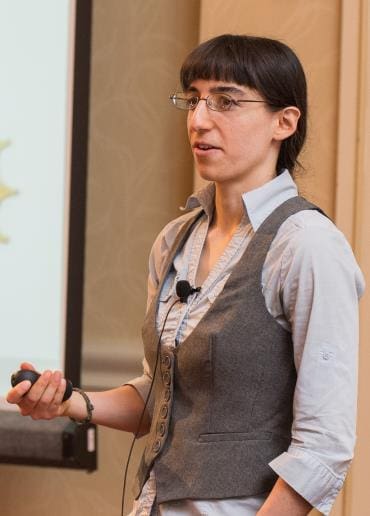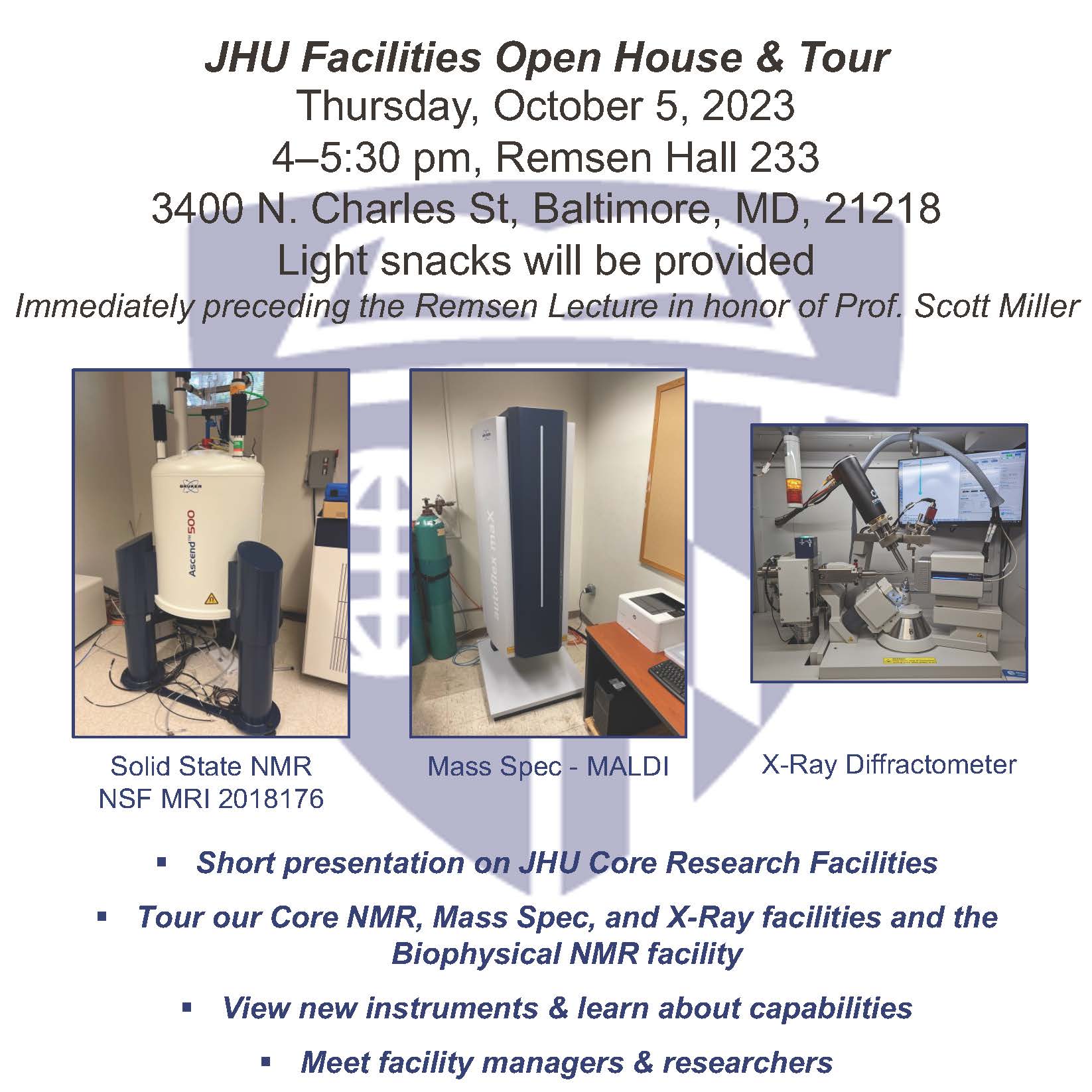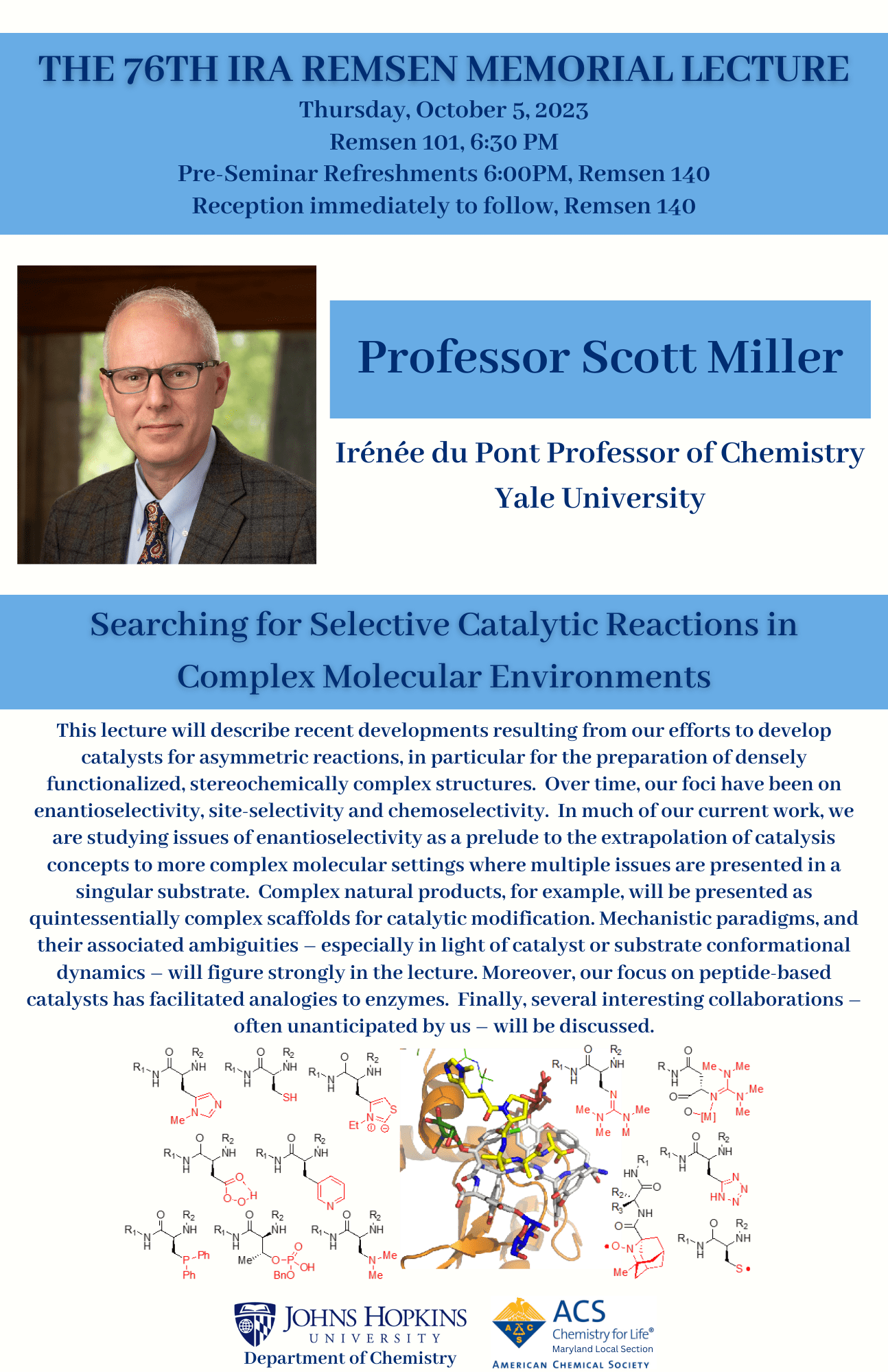Timothy A. Su on Sila-Diamondoids
Remsen Hall 233Professor Timothy A. Su, University of California Riverside “Sila-Diamondoids: Atomically Precise Nanoclusters of Crystalline Silicon” This talk will describe the synthesis, derivatization, and quantum transport properties of silicon diamondoids—atomically precise clusters of crystalline silicon. First, we describe strategies for the synthesis and functionalization of the fundamental silicon diamondoid cluster, sila-adamantane. Mechanistic insights support that an […]
Professor Robert Continetti
Remsen Hall 233Professor Robert Continetti, University of California San Diego “Transition State Dynamics and Hypervelocity Ice Grain Impact Mass Spectrometry” Review studies using the photodetachment of precursor negative ions to examine the transition state dynamics of hydroxyl radical reactions. In cases where the anion has a geometry similar to the transition-state region for a bimolecular neutral reaction, […]
Atomic-scale insights into electrocatalyst structure and function
Remsen Hall 233Professor Anthony Shoji Hall, Johns Hopkins University “Atomic-scale Insights into Electrocatalyst Structure and Function” ABSTRACT: The development of efficient renewable energy conversion and storage devices to curb climate change is one of the most important challenges of the 21st century. This can be addressed by using renewable electricity to manufacture chemical fuels and synthetic precursors, or […]
Professor Xue-Bin Wang
Remsen Hall 233Professor Xue-Bin Wang, Pacific Northwest National Laboratory “Probing Structures, Energetics and Reactivities of Anionic Molecules and Clusters Using Cryogenic Photoelectron Spectroscopy and Imaging” Size-selective cryogenic photoelectron spectroscopy (cryoPES) coupled with electrospray ionization (ESI) source has been demonstrated to be a powerful experimental technique to investigate electronic structures and energetics of a wide variety of solution […]
CAFS Guest Speaker Professor Brenda Rubenstein
Remsen Hall 233Professor Brenda Rubenstein, Brown University “Predicting the Relative Populations of Protein Conformations without a Physics Engine Using AlphaFold 2” For decades, the conventional way to predict the different conformations of proteins and their relative populations has been to use relatively expensive physics-based algorithms such as molecular dynamics. However, in recent years, an increasing number of […]
JHU Open House & Core Facility Tour
Thursday, October 54 pm - 5:30 pmJHU Open House & Core Facility TourRemsen Hall 233https://goo.gl/maps/WhEjo7CAdi4vUaDG9Reception to follow - See attached flyer for details
Remsen Lecture
Thursday, October 5, 2023 Remsen 101 6:30 PM Pre-Seminar Refreshments 6:00PM, Remsen 140 Reception immediately to follow, Remsen 140
Professor Masha Kamenetska
Remsen Hall 233Professor Masha Kamenetska, Boston University “Recent Developments in Single Molecule Conductance Spectroscopy” Techniques for forming and quantifying electron transport through single molecule-metal junctions have advanced in recent years. The implications of such measurements go beyond single molecule electronics and include chemical fingerprinting of metal-molecule interface atomic structure, quantum sensing and development of surface chemistry techniques. […]
Professor Jared Lewis
Remsen Hall 233Professor Jared Lewis , Indiana University "Non-Native Enzyme Catalysis” Metalloenzymes perform some of the most remarkable transformations in nature under ambient conditions in complex cellular milieu, but their native reactivity is limited to biologically relevant reactions. Non-native enzyme catalysis brings the exquisite selectivity of enzymes to bear on chemical reactions that did not happen to […]
Professor Alexandra Velian
Remsen Hall 233Professor Alexandra Velian , University of Washington "Molecular Insights into Metal-Support Interactions for Catalyst Design” A central research goal in the Velian group is to create next-generation single atom catalysts poised to harness the cooperativity between the active site and chemically non-innocent supports. To emulate defect sites in inorganic heterogeneous catalysts in a controlled fashion, […]
Dr. Gaoxiang Liu
Remsen Hall 233Dr. Gaoxiang Liu, Berkeley Advanced Optical Imaging Platforms for Visualizing Subcellular Dynamics with High Spatiotemporal Resolution and Imaging Macroscale Neural Circuits with Nanoscale Resolution Life is an intricate and dynamic entity, rooted in the complex interactions of molecules and subcellular structures within cells and across multicellular systems. The advancement of light microscopy techniques has significantly […]









